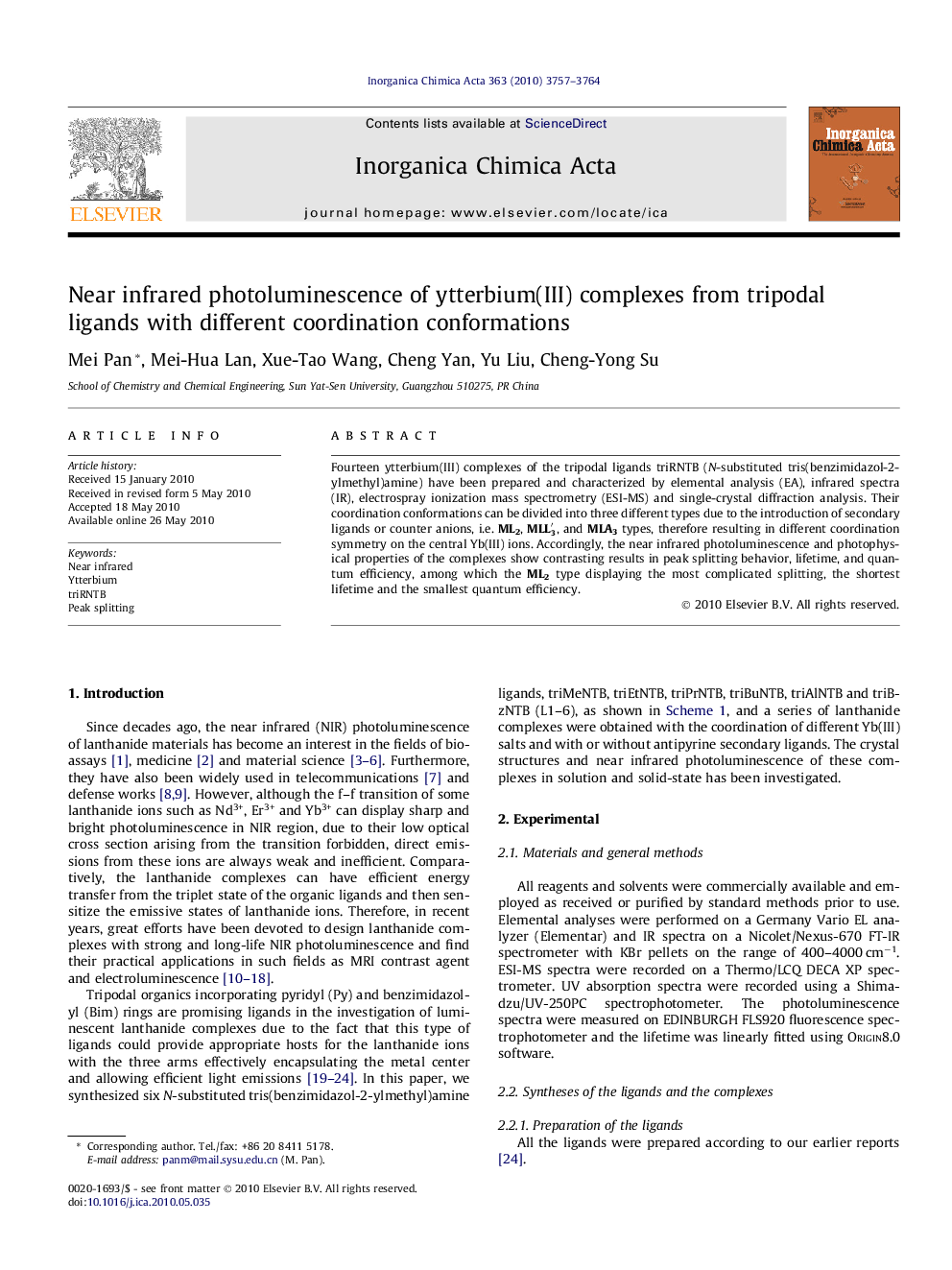| Article ID | Journal | Published Year | Pages | File Type |
|---|---|---|---|---|
| 1307846 | Inorganica Chimica Acta | 2010 | 8 Pages |
Fourteen ytterbium(III) complexes of the tripodal ligands triRNTB (N-substituted tris(benzimidazol-2-ylmethyl)amine) have been prepared and characterized by elemental analysis (EA), infrared spectra (IR), electrospray ionization mass spectrometry (ESI-MS) and single-crystal diffraction analysis. Their coordination conformations can be divided into three different types due to the introduction of secondary ligands or counter anions, i.e. ML2, MLL3′, and MLA3 types, therefore resulting in different coordination symmetry on the central Yb(III) ions. Accordingly, the near infrared photoluminescence and photophysical properties of the complexes show contrasting results in peak splitting behavior, lifetime, and quantum efficiency, among which the ML2 type displaying the most complicated splitting, the shortest lifetime and the smallest quantum efficiency.
Graphical abstractThe coordination conformations of 14 Yb(III) complexes of the tripodal ligands triRNTB can be divided into three different types due to the introduction of secondary ligands and counter anions. Accordingly, the near infrared photoluminescence of the complexes show contrasting results in peak splitting behavior.Figure optionsDownload full-size imageDownload as PowerPoint slide
